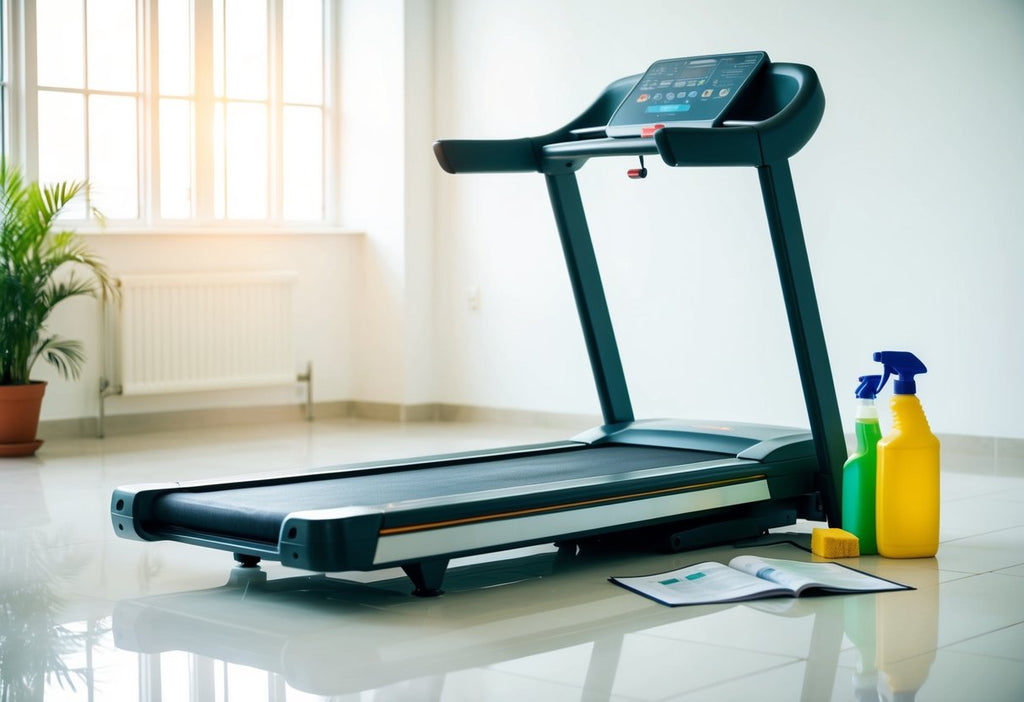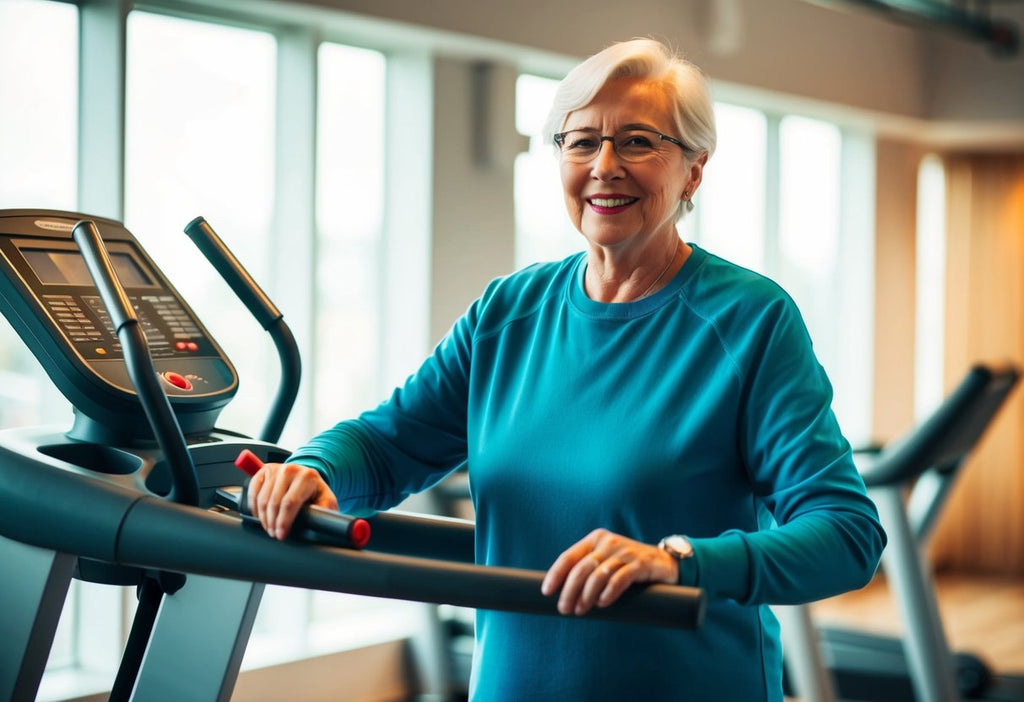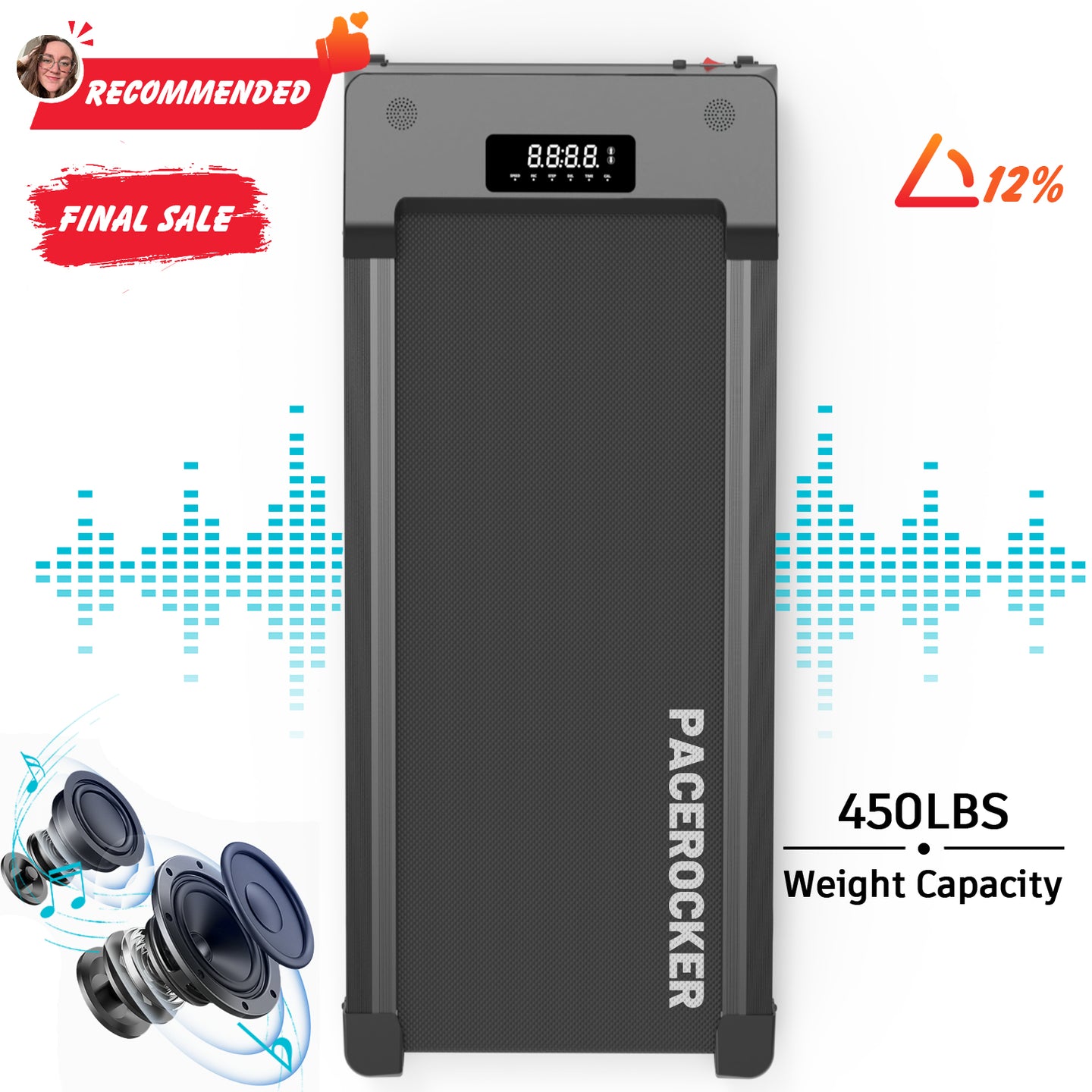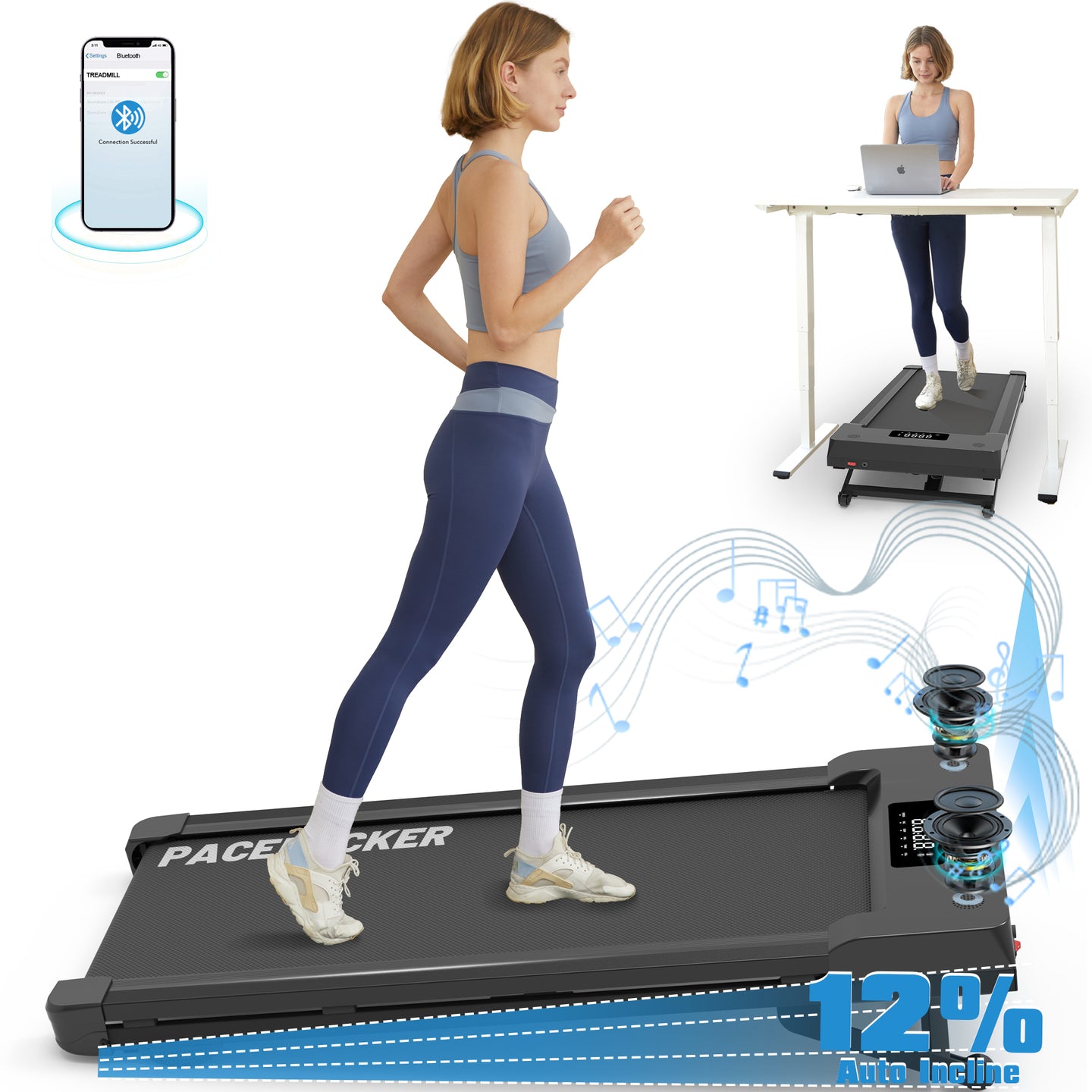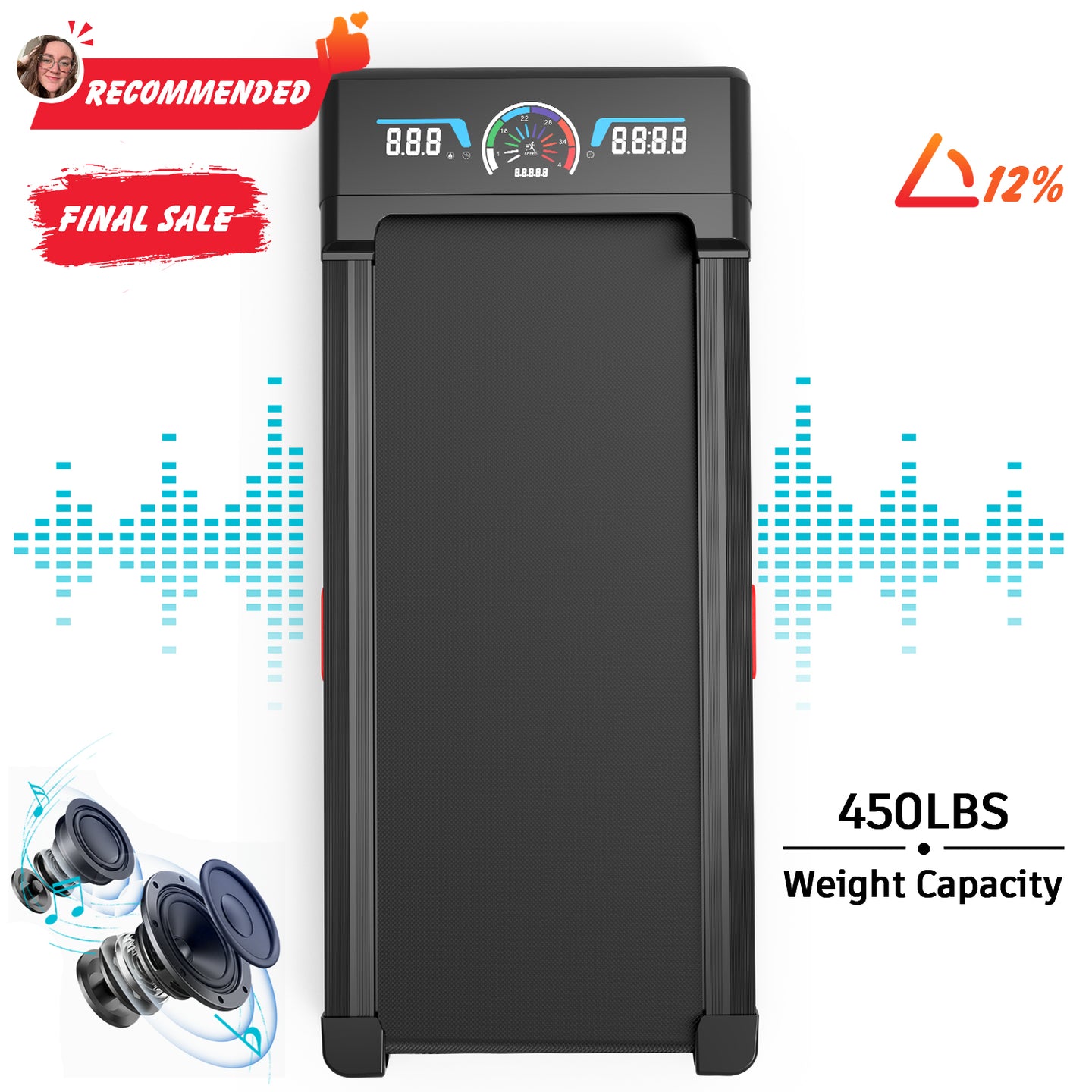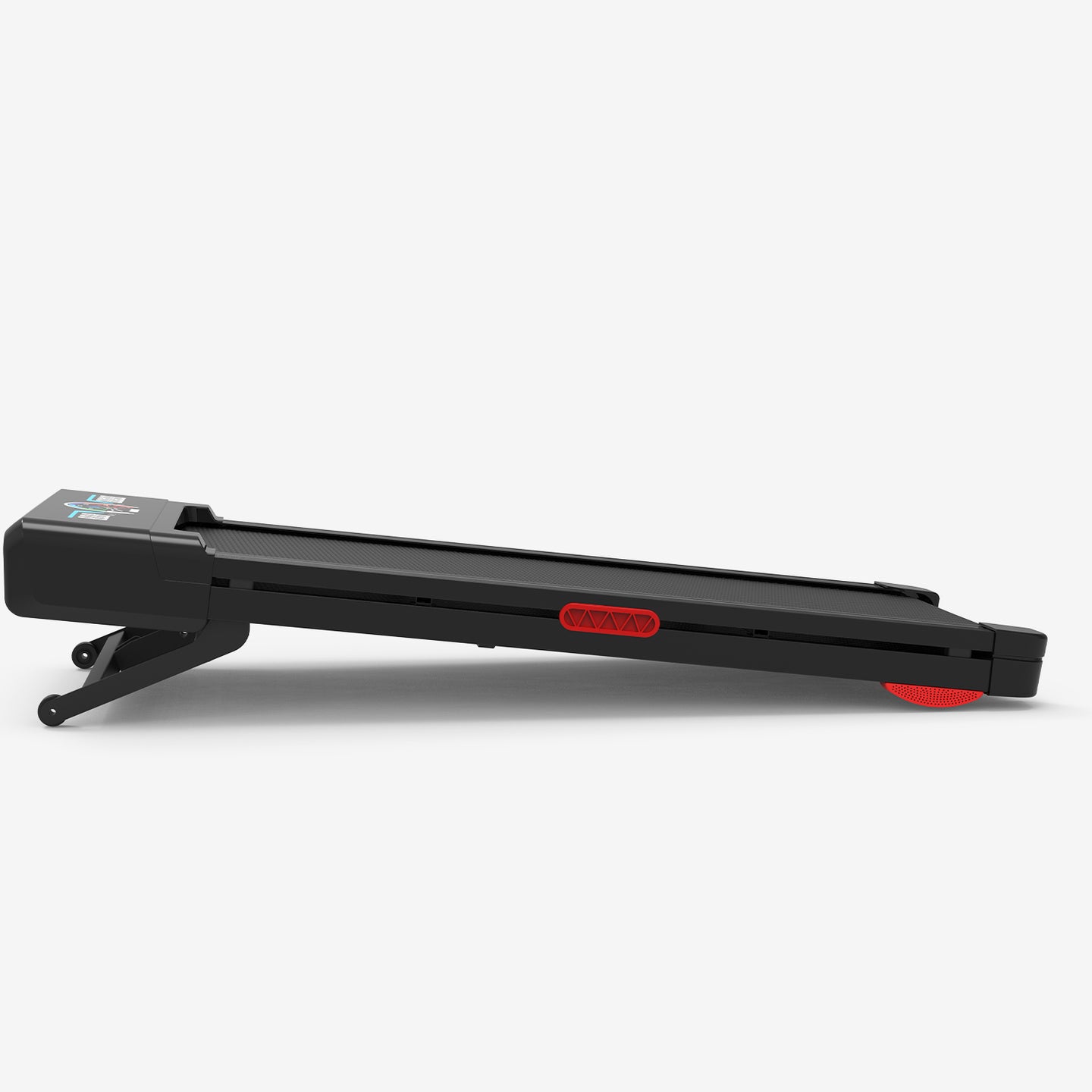Combining Yoga and Walking Pad Treadmill Exercises
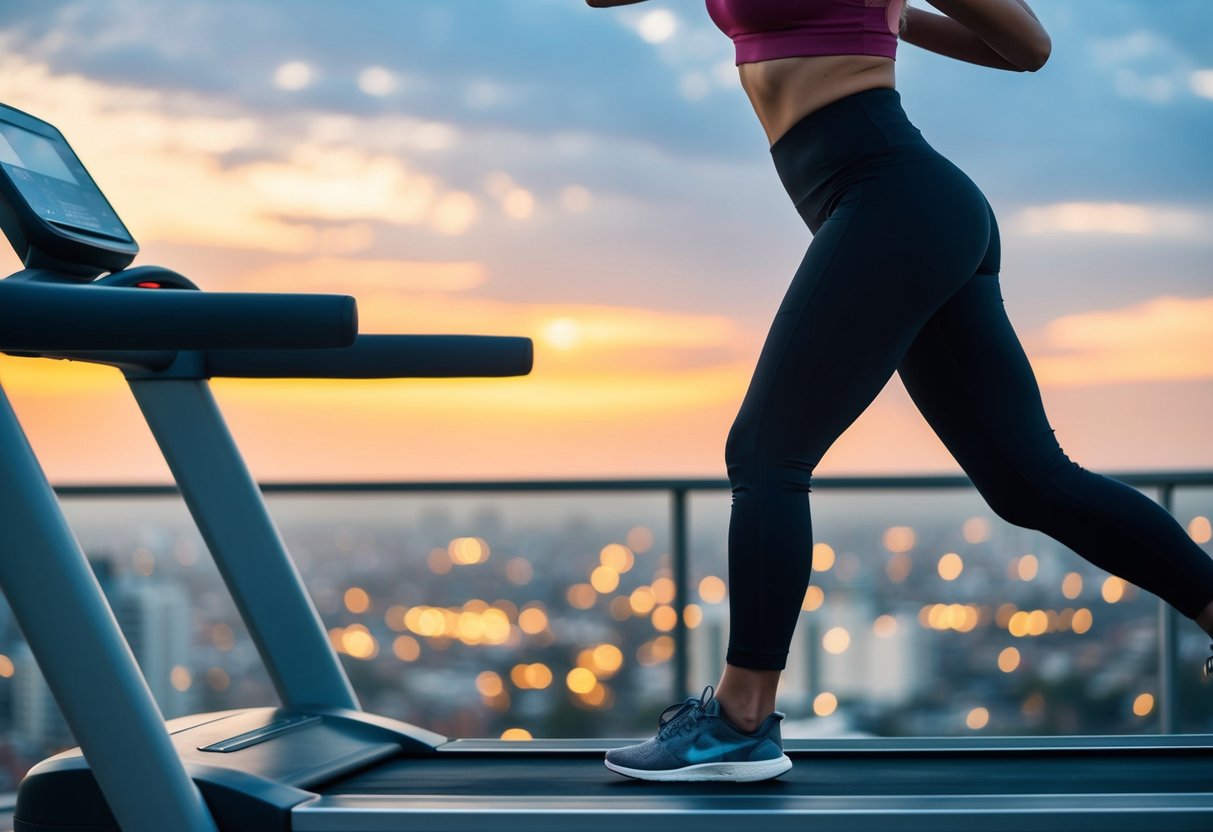
Don’t forget to check out our Pacerocker, Trailviber, and Trailviber Auto Incline walking pad treadmills.
Yoga and walking pad treadmill exercises offer a powerful combination for enhancing physical and mental well-being. By blending these practices, we can create a holistic fitness routine that caters to both body and mind. Integrating yoga poses with walking pad sessions provides a balanced approach to exercise, improving flexibility, cardiovascular health, and stress reduction.
We've discovered that alternating between yoga sequences and treadmill intervals keeps workouts fresh and engaging. This versatile approach allows us to adapt our routines based on time constraints, energy levels, and fitness goals. Plus, the compact nature of walking pad treadmills makes it easy to transition between exercises in the comfort of our homes.
Our experience has shown that this combined method not only boosts physical fitness but also enhances mental clarity and focus. The mindful breathing techniques from yoga complement the rhythmic movement of walking, creating a synergistic effect that leaves us feeling refreshed and energized.
Key Takeaways
- Combining yoga and walking pad exercises creates a balanced, full-body workout
- This versatile approach adapts to various fitness levels and time constraints
- The combination enhances both physical health and mental well-being
Benefits of Yoga
Yoga offers numerous advantages for physical and mental well-being. This ancient practice has become increasingly popular for its holistic approach to health and fitness.
Flexibility and Balance
Yoga poses help increase our flexibility by gently stretching and lengthening muscles. Regular practice can improve our range of motion in joints, reducing stiffness and discomfort. Many poses challenge our balance, enhancing our stability and coordination.
As we hold poses, we strengthen our core muscles, which are crucial for maintaining balance. This improved balance can benefit us in daily activities and reduce the risk of falls, especially as we age.
Certain yoga styles, like Yin or restorative yoga, focus on deep stretches held for longer periods. These practices can significantly boost our flexibility over time.
Strength and Endurance
Contrary to popular belief, yoga isn't just about stretching. Many poses build strength throughout our body. Holding poses like plank, warrior, or chair pose engages multiple muscle groups simultaneously.
Yoga's weight-bearing poses help strengthen our bones, which is especially important for preventing osteoporosis. As we progress in our practice, we can tackle more challenging poses that require greater strength and endurance.
Some yoga styles, such as Ashtanga or Power Yoga, provide a more intense workout. These dynamic practices can improve our cardiovascular fitness and stamina.
Stress Reduction and Relaxation
Yoga's emphasis on breath awareness and mindfulness can significantly reduce our stress levels. Deep, controlled breathing activates our parasympathetic nervous system, promoting relaxation.
Many yoga classes end with Savasana, a relaxation pose that allows our body and mind to integrate the practice. This dedicated relaxation time can improve our sleep quality and overall sense of well-being.
Meditation, often incorporated in yoga sessions, helps calm our racing thoughts. Regular practice can enhance our ability to manage stress in daily life.
Advantages of Walking Pad Treadmills
Walking pad treadmills offer unique benefits for fitness enthusiasts and busy professionals alike. These compact exercise machines combine functionality with space-saving design, making them an attractive option for home workouts.
Convenience and Accessibility
Walking pad treadmills fit easily into small living spaces. We can tuck them under desks or beds when not in use, freeing up valuable floor space. This portability allows us to exercise anytime, regardless of weather conditions or gym hours.
Many models are foldable, making storage even simpler. Their lightweight design means we can move them around effortlessly, adapting our workout space as needed.
Walking pads often come with remote controls or smartphone apps. This feature lets us adjust speed and track our progress without interrupting our stride. Some even offer preset programs, tailoring workouts to our fitness goals.
Cardiovascular Fitness
Regular use of walking pad treadmills can significantly boost our heart health. These machines provide low-impact cardio workouts, ideal for all fitness levels.
We can easily control the intensity of our workouts. Starting with a gentle walk, we can gradually increase speed as our stamina improves. This progressive approach helps build endurance safely and effectively.
Many walking pads offer incline settings. By adjusting the angle, we engage different muscle groups and increase calorie burn. This variety keeps our workouts challenging and prevents plateaus in our fitness journey.
Weight Management
Walking pad treadmills are effective tools for weight control. Regular walking burns calories, helping us maintain a healthy weight or shed excess pounds.
Even at low speeds, these machines can contribute to our daily calorie expenditure. We can easily incorporate walking sessions into our daily routines, such as during work calls or while watching TV.
Consistent use of walking pads can boost our metabolism. This increased metabolic rate helps us burn more calories throughout the day, even when we're not exercising. Combined with a balanced diet, this can lead to sustainable weight loss over time.
Integrating Yoga and Walking Pad Workouts
Combining yoga and walking pad exercises creates a well-rounded fitness routine that enhances both physical and mental well-being. This approach allows us to reap the benefits of cardio and flexibility training in one integrated workout.
Creating a Balanced Routine
We can start by alternating yoga and walking pad sessions throughout the week. For example, we might do yoga on Mondays, Wednesdays, and Fridays, while using the walking pad on Tuesdays, Thursdays, and Saturdays. This gives our bodies time to recover between workouts.
Another option is to combine both activities in a single session. We can begin with a 15-minute walk on the pad to warm up, followed by 30 minutes of yoga, and finish with another 15-minute walk. This method provides a balanced mix of cardio and stretching.
For those short on time, we can integrate short yoga poses into our walking routine. Every 10 minutes, we can pause the walking pad and perform a quick yoga sequence for 2-3 minutes before resuming our walk.
Example Workout Plans
Plan A: Alternating Days
- Monday: 45-minute yoga session
- Tuesday: 30-minute walking pad workout
- Wednesday: 45-minute yoga session
- Thursday: 30-minute walking pad workout
- Friday: 45-minute yoga session
- Saturday: 30-minute walking pad workout
- Sunday: Rest or light stretching
Plan B: Combined Daily Workout
- 10-minute walking pad warm-up
- 20-minute yoga flow
- 10-minute walking pad cool-down
We can adjust these plans based on our fitness levels and time constraints. It's essential to listen to our bodies and modify the intensity or duration as needed. By integrating yoga and walking pad exercises, we create a versatile routine that improves our overall fitness and well-being.
Safety Tips and Best Practices
Combining yoga and walking pad exercises offers great benefits, but it's crucial to prioritize safety. Let's explore proper techniques and how to adjust your workouts effectively.
Proper Form and Technique
When practicing yoga on a walking pad, we need to maintain proper alignment. Keep your feet hip-width apart and engage your core for stability. Focus on smooth transitions between poses to prevent slips or falls.
For walking exercises, maintain an upright posture with shoulders relaxed. Take natural strides and avoid overreaching. It's essential to keep your eyes forward, not down at the treadmill, to maintain balance.
Always use the safety clip provided with the walking pad. This will stop the machine if you stumble or fall, preventing injuries.
Adjusting Intensity and Duration
Start with shorter sessions, gradually increasing duration as you build stamina. We recommend beginning with 10-15 minute sessions, slowly working up to 30 minutes or more.
For yoga, choose poses that match your skill level. Begin with basic standing poses before attempting more challenging balance postures on the walking pad.
Adjust walking speed based on your comfort level. Start slow, around 1-2 mph, and increase speed as you gain confidence. Listen to your body and take breaks when needed.
Alternate between yoga and walking to prevent fatigue. This variation keeps workouts engaging and targets different muscle groups.
Essential Equipment and Accessories
To get started with combining yoga and walking pad treadmill exercises, we'll need a few key items. Let's explore the essential equipment that will set us up for success in our fitness journey.
Selecting a Walking Pad Treadmill
When choosing a walking pad treadmill, we should look for compact models that fit easily in our living spaces. Opt for machines with adjustable speeds, ranging from 0.5 to 4 mph, to accommodate various walking intensities.
Look for treadmills with safety features like auto-stop sensors and handrails for added stability. A quiet motor is crucial, especially if we plan to use it while watching TV or during video calls.
Consider models with built-in workout programs or smartphone connectivity for tracking progress. Weight capacity is another important factor - ensure the treadmill can support our body weight comfortably.
Yoga Mats and Props
A high-quality yoga mat is essential for our practice. Choose a mat with good grip and cushioning to support our joints during floor exercises. Non-slip mats are ideal for maintaining stability during standing poses.
Yoga blocks can help us modify poses and improve alignment. Foam or cork blocks are popular choices. A yoga strap is useful for stretching and improving flexibility in seated poses.
For restorative practices, a bolster or firm cushion can provide support in reclined positions. Consider adding a yoga blanket for extra comfort and warmth during relaxation poses.
Don't forget a water bottle to stay hydrated during our combined yoga and walking sessions!
Monitoring Progress and Setting Goals
Tracking our yoga and walking pad treadmill journey is key to staying motivated and seeing results. We recommend keeping a simple workout log to record sessions, distances, and yoga poses mastered.
Setting realistic, measurable goals helps drive our practice forward. We might aim to increase walking speed gradually or hold challenging yoga poses for longer durations.
Progress photos can be a powerful visual motivator. Taking monthly snapshots allows us to see physical changes that may not be obvious day-to-day.
Wearable fitness trackers offer valuable insights into our heart rate, steps taken, and calories burned. This data helps us tailor our workouts for optimal results.
Celebrating small wins keeps us engaged. We can reward ourselves for consistency - perhaps with new workout gear after a month of regular practice.
Reassessing goals periodically ensures they remain challenging yet achievable. As we grow stronger, we can push ourselves further in both yoga and walking exercises.
Remember, progress isn't always linear. Some days may feel more challenging than others. By focusing on long-term trends, we maintain a positive outlook on our fitness journey.
Nutrition and Hydration for Optimal Performance
Proper nutrition and hydration are crucial for getting the most out of our yoga and walking pad treadmill workouts. We need to fuel our bodies with the right nutrients to support our exercise routine and recovery.
Before our sessions, we should eat a light meal rich in complex carbohydrates and lean protein. This could be whole grain toast with peanut butter or a small bowl of oatmeal with fruit. These options provide sustained energy without weighing us down.
During our workouts, staying hydrated is key. We aim to drink water regularly, especially if we're sweating. For longer sessions, we might consider adding electrolytes to our water to replenish what we lose through perspiration.
Post-workout nutrition is equally important. We focus on consuming a mix of protein and carbohydrates within 30 minutes after exercising. This helps repair muscles and replenish energy stores. A smoothie with Greek yogurt, banana, and berries can be an excellent choice.
Throughout the day, we maintain a balanced diet rich in:
- Lean proteins (chicken, fish, tofu)
- Whole grains (quinoa, brown rice)
- Fruits and vegetables
- Healthy fats (avocado, nuts, olive oil)
Proper hydration isn't just for workout times. We make sure to drink water consistently throughout the day to support our body's functions and prepare for our next yoga or treadmill session.
Incorporating Mindfulness and Meditation
We've found that combining mindfulness and meditation with yoga and walking pad exercises creates a powerful wellness routine. By focusing our attention on the present moment, we can enhance both the physical and mental benefits of our workouts.
Starting our walking pad session with a brief meditation helps clear our minds and set intentions for the workout. We like to take a few deep breaths and scan our bodies for any areas of tension before stepping onto the treadmill.
During yoga poses, we practice being fully aware of our breath and bodily sensations. This mindful approach deepens the stretch and strengthens our mind-body connection.
Here are some simple ways to incorporate mindfulness into your routine:
- Focus on your breath while walking
- Notice the sensations in your feet as they contact the treadmill
- Pay attention to your posture and alignment during yoga poses
- Observe thoughts without judgment as they arise
We've noticed improved stress reduction and mental clarity by integrating these mindful practices. The combination of movement and meditation helps us feel more centered and energized throughout the day.
Remember, consistency is key. Even just a few minutes of mindfulness daily can make a significant difference in our overall well-being when paired with regular yoga and walking pad exercises.
Community and Support
Connecting with others who share our passion for combining yoga and walking pad treadmill exercises can enhance our experience and motivation. Let's explore ways to find like-minded individuals and valuable online resources.
Finding Like-Minded Individuals
Local fitness centers and yoga studios often host events or classes that blend yoga with other exercises. We can inquire about specialized sessions or start our own group. Social media platforms like Facebook and Instagram are great for finding or creating communities focused on this unique exercise combination.
Meetup.com is another excellent resource for discovering local groups interested in innovative fitness approaches. We might even consider organizing a meetup ourselves to attract others who are curious about integrating yoga and walking pad workouts.
Online Resources and Applications
Numerous apps and websites cater to both yoga and treadmill exercises. Yoga apps like Down Dog or Asana Rebel offer customizable routines that we can easily incorporate into our walking pad sessions. For the treadmill portion, apps such as Aaptiv or Peloton provide guided workouts that complement our yoga practice.
YouTube channels dedicated to fitness often feature creative workout combinations. We can find tutorials on blending yoga poses with walking pad exercises, offering fresh ideas for our routines.
Online forums and Reddit communities focused on fitness innovations can be goldmines for tips, experiences, and support from fellow enthusiasts exploring this exercise fusion.
Frequently Asked Questions
Integrating yoga and walking pad treadmill exercises can significantly enhance fitness routines. We've compiled answers to common questions about combining these practices for optimal results.
How can integrating yoga with a treadmill walking routine enhance overall fitness?
Combining yoga and treadmill walking creates a well-rounded workout. Yoga improves flexibility and balance, while walking boosts cardiovascular health. This pairing helps build strength, endurance, and mental focus.
Alternating between yoga and treadmill sessions can prevent exercise boredom. It also allows for active recovery days, reducing the risk of overtraining.
What are effective HIIT treadmill workouts for those new to exercise?
For beginners, we recommend starting with a simple interval routine. Walk at a comfortable pace for 2 minutes, then increase the speed for 30 seconds. Repeat this cycle for 15-20 minutes.
Gradually increase the intensity and duration of the high-speed intervals as fitness improves. Always warm up and cool down properly to prevent injury.
Can combining yoga with treadmill exercises aid in weight loss, and how?
Yes, this combination can be effective for weight loss. Treadmill exercises burn calories and boost metabolism. Yoga builds lean muscle mass, which increases overall calorie burn.
We've seen great results when clients do yoga to improve core strength and flexibility. This allows for more efficient treadmill workouts, leading to greater calorie expenditure.
What are the benefits of mixing high-intensity treadmill sessions with yoga?
High-intensity treadmill sessions improve cardiovascular fitness and burn calories. Yoga complements this by enhancing recovery, reducing muscle soreness, and improving flexibility.
We've noticed that yoga's focus on breath work can improve oxygen utilization during intense treadmill sessions. This leads to better endurance and performance.
How can one tailor a walking pad workout to maximize calorie burn?
To maximize calorie burn, we suggest incorporating incline and speed variations. Start with a 5-minute warm-up, then alternate between 2 minutes at a higher incline and 1 minute at a faster pace.
Adding arm movements or light hand weights can also increase calorie expenditure. Remember to maintain proper form to prevent injury.
What's a strategic plan for a 30-minute HIIT treadmill workout for beginners?
We recommend this beginner-friendly HIIT treadmill plan:
- 5-minute warm-up at a comfortable walking pace
- 20 minutes of intervals: 1 minute at a brisk walk, 30 seconds at a light jog or fast walk
- 5-minute cool-down at an easy pace
Gradually increase the intensity of the intervals as fitness improves. Always listen to your body and adjust the workout as needed.
Blend yoga with walking pad treadmill exercises to create a holistic fitness routine that boosts both physical and mental well-being, enhancing flexibility, cardiovascular health, and stress reduction.


